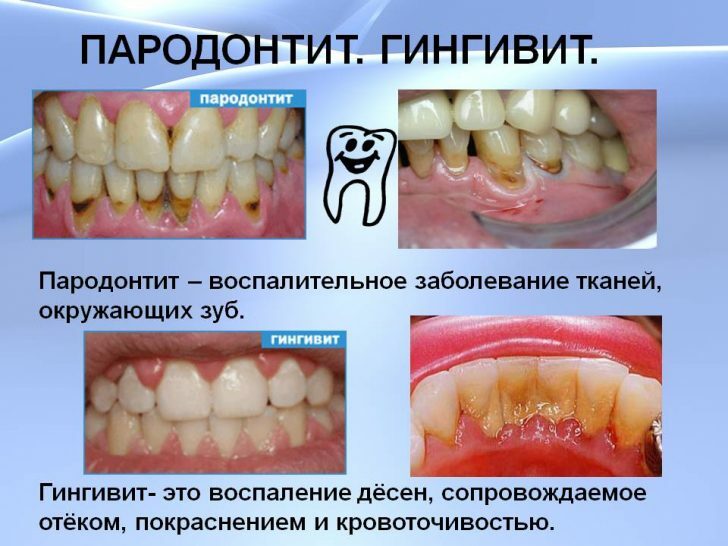Wrong bite in a child: types, causes, methods of treatment
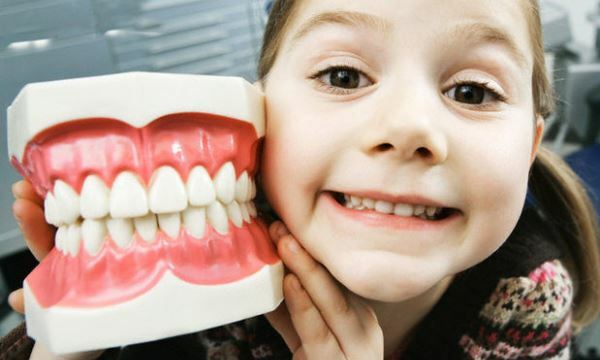 The concept of "bite" in dentistry implies the ratio of the upper and lower dentition with central occlusion, i.e. tight jaw closure with an exact coincidence of the line between the central incisors with the median line of the face.According to statistics, an incorrect bite is recorded in more than 80% of people.Many patients do not know about the presence of certain pathologies and have no idea how dangerous this is for the body as a whole.
The concept of "bite" in dentistry implies the ratio of the upper and lower dentition with central occlusion, i.e. tight jaw closure with an exact coincidence of the line between the central incisors with the median line of the face.According to statistics, an incorrect bite is recorded in more than 80% of people.Many patients do not know about the presence of certain pathologies and have no idea how dangerous this is for the body as a whole.
Bite formation
Bite is formed gradually, in five steps.On each of them, the manifestation of certain deviations is possible, which in the future will lead to an incorrect closure of the dentition.
Basic stages of occlusal formation:
-
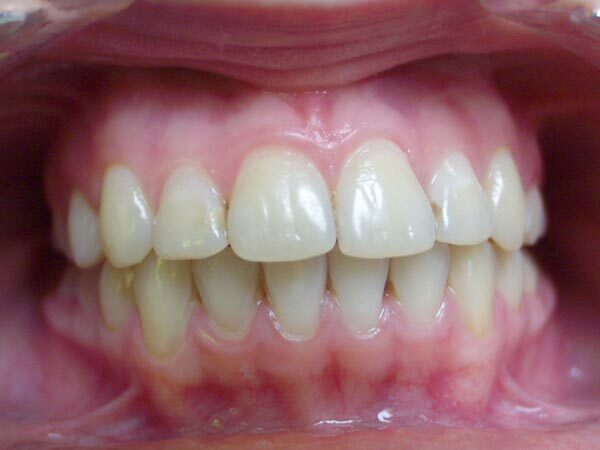 From birth to six months of age.
From birth to six months of age. - From 6 months to 3 years( formation of temporary occlusion).
- From 3 to 6 years( temporary bite is formed and rapid growth of jaws is noted).
- From 6 to 12 years( the time of replacement of milk teeth by constant).
- From 12 to 15 years( the final formation of permanent bite).
Causes and possible consequences of
disorders The causes of bite pathology development are often the incorrect eruption of individual dental units or dysplasia of the jaw bones.
Among the reasons leading to the formation of an abnormal occlusion, a leading role is given to genetic factors.The features of teething, as well as the structure of the jaws, can be inherited by a child from one of the parents.
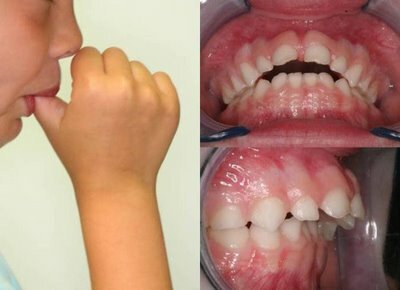 Chronic diseases, in which nasal breathing is impaired, can also be important.Since all the organs of the oral cavity take part in the formation of the occlusion, the constantly open mouth of the child can subsequently have a most negative effect on the bite.
Chronic diseases, in which nasal breathing is impaired, can also be important.Since all the organs of the oral cavity take part in the formation of the occlusion, the constantly open mouth of the child can subsequently have a most negative effect on the bite.
Finally, one should not underestimate such a factor as bad habits in children.Influence on teething can bite the lips and tongue, and also sucking a finger.
Please note: must be weaned from the dummy baby's pacifier as early as possible.This habit can have negative consequences for the eruption of the teeth of the frontal group( incisors).
A number of problems from the tooth-jaw system can be laid even during the intrauterine development of the child.
 Among the factors that normally adversely affect the structure of the child's teeth and jawbones are:
Among the factors that normally adversely affect the structure of the child's teeth and jawbones are:
- metabolic disorders;
- anemia in the mother;
- viral diseases of the pregnant;
- pathology of pregnancy;
- intrauterine infection at different stages of embryogenesis.
Other etiologic factors leading to dental abnormalities include trauma, premature or too late removal of temporary teeth, multiple carious lesions, insufficient intake of fluoride and calcium in the body, malnutrition, and various injuries to the teeth andJaws.
In adult patients, bite deformities are relatively rare.Usually, they are the result of incorrectly performed orthopedic treatment( in particular - violations when installing bridges) or violations when replacing defects with dental implants.
Developmental anomalies are usually manifested by more or less pronounced aesthetic defects, but this is by no means the only problem.With an abnormal occlusion, there may be a violation of the act of chewing, and insufficient grinding of food often leads to diseases of the digestive system.A person with an incorrect bite may have speech defects, which in some cases leads to psychological problems.
Uneven loading on the teeth often results in the formation of abnormal mobility of dental units and bare their necks already at a young age.It is possible with all responsibility to assert that an incorrect bite with the passage of time is capable of provoking the development of periodontal disease.Anomalies of teeth closing lead to pathologies of temporomandibular joints, which are manifested by headaches and pain syndrome in the masticatory muscles.
To extremely unpleasant consequences also it is possible to carry pathological erasability of enamel and increase of sensitivity of a teeth on a background of its thinning.Among the most serious complications are nocturnal apnea( respiratory arrest), respiratory and respiratory disorders.
Types of bite
Bite can be replaceable( with milk teeth) and permanent.Only after all temporary teeth are replaced by permanent teeth can one speak of a physiological or pathological bite.
Bite of the teeth is correct and incorrect
Physiological bite
With physiological bite, the teeth of the upper row overlap the lower ones by approximately 1/3 of the length of the crown.All upper teeth are as tightly in contact with the same and backward lower ones.Significant intervals between individual units are not normally observed.Only this ratio of the dentition can guarantee the normal functionality of the dentoalveolar system.
The following physiological occlusion types are distinguished:
- Orthognathic bite;
- Progenic bite;
- Direct bite;
- Biprognatic bite
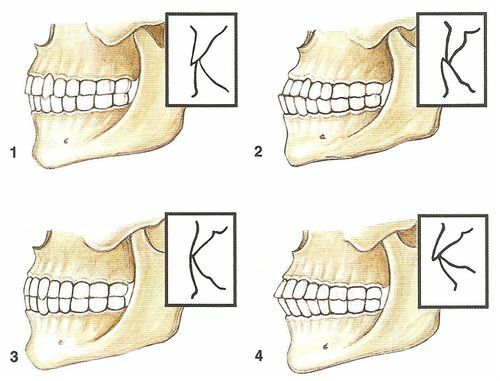
The orthognathic bite is ideal for functionality and aesthetics, but it is rare.
Progenic differs by a relatively small extension of the mandible anteriorly.
With a direct bite, the central teeth are joined by cutting surfaces.
The bipopgnatic bite is very similar to the orthognathic bite, but with it there is a more significant inclination of the teeth of the upper and lower rows anteriorly.
Anomalies of occlusion
It is accepted to distinguish 5 main types of pathological occlusion:
- Distal( prognathic) bite;
- Medial( mesial) bite;
- Open bite;
- Deep bite;
- Cross bite.
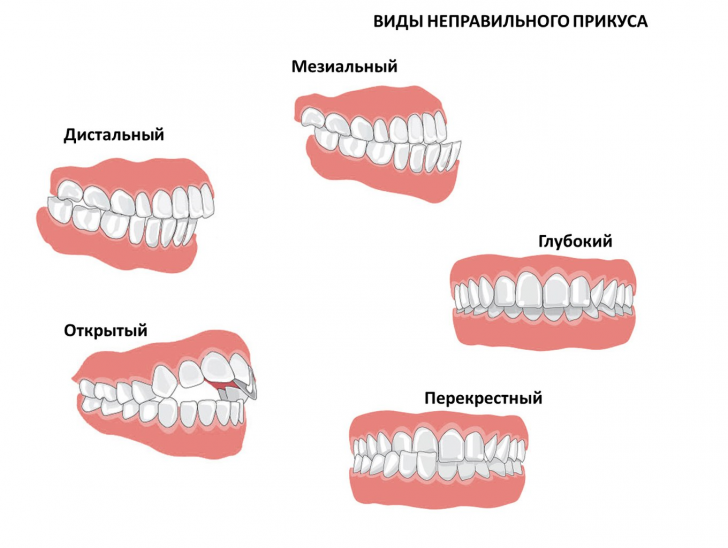
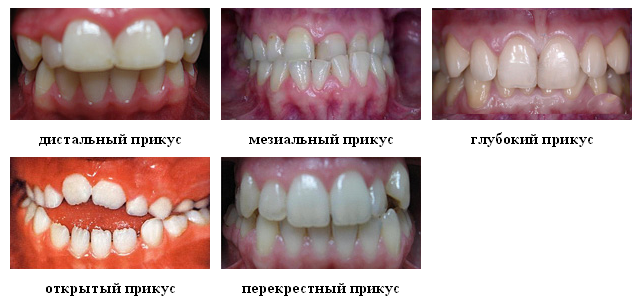
If the individual teeth in the row are not in their proper place, it is customary to talk about their dystopia.
Prognathia is characterized by underdevelopment of the lower jaw or excessive development of the upper jaw.
With mesial bite( lower prognathia), the lower dentition is considerably extended in the front direction and overlaps the upper dentition.
If the dentition in the central occlusion is not in close contact on a large extent, it is an open bite.There are frontal and lateral open bite( respectively, to groups of teeth that do not contact).
A deep bite is the overlap of the upper teeth of the lower by more than ½ the height of the supragingival part.
Cross bite is observed with one- or two-sided underdevelopment of the jaws.In this case, the dentition is "overlapped" by the type of scissors.
How to fix a bite in children?
If the bite is incorrect, the treatment is performed by an orthodontist.Correction of abnormalities of teeth closing in children is most problematic if pathology is caused by hereditary( genetic) factors.
Currently, dentists use five basic methods of bite correction:
-
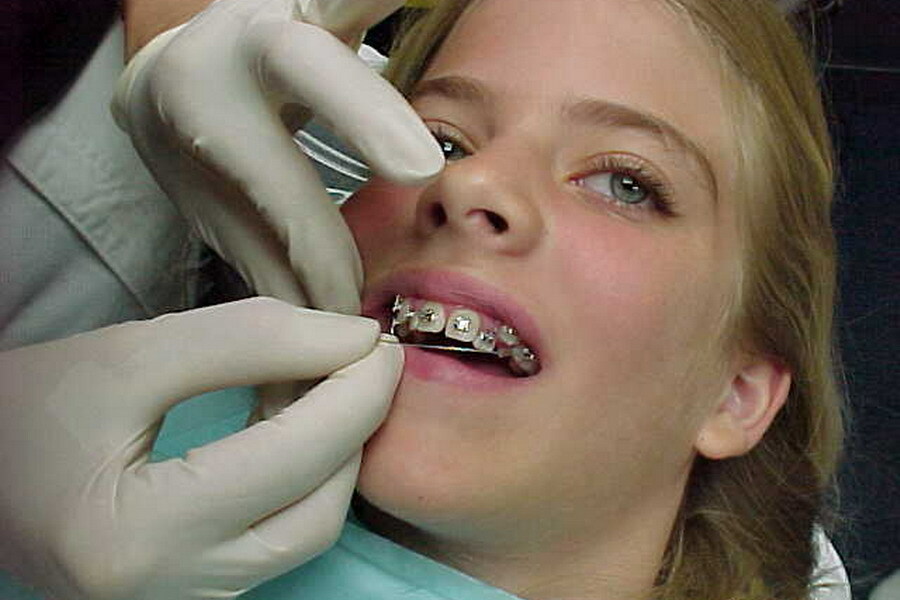 Treatment of occlusion with the help of special orthodontic structures( instrumentation method).
Treatment of occlusion with the help of special orthodontic structures( instrumentation method). - Myoterapia( the effect on muscles of special exercises).
- Comprehensive methodology.
- Orthopedic treatment.
- Surgical treatment.
Myoterapia
Myoterapia can be shown already to children of younger age group.It involves a very long and systematic implementation of specially designed exercises by the patient.The complex provides the necessary load on the muscles of the mimic and chewing groups, as well as the muscles of the bottom of the oral cavity.
Thanks to keeping them in good tone, the most favorable prerequisites for the correct development of the jaw bones are provided, and in the future - for the eruption of maximally even permanent teeth.If for small children, myoterapy can be the main treatment technique, then for patients with a changeable occlusion it is considered only as an auxiliary measure.
Orthodontic treatment
Orthodontic treatment is indicated for children who have already reached the age of 6, that is, at the beginning of the change of teeth.It is carried out with the help of a variety of apparatuses, which make it possible to correct the dentition and the shape of the jaw as a whole.Adaptations can move teeth, and also stimulate or somewhat inhibit the growth process of individual parts of the jaw bones.To correct the occlusion, plates, trainers and braces are used.
You can read the article about bracket systems on our website.
All orthodontic devices can be divided into two large categories: for periodic or permanent wearing( i.e., removable and non-removable).
Removable devices are plates that are manufactured individually according to pre-made casts.To the teeth, these devices are fixed by means of metal hooks.Plates are designed to apply a directed force to separate groups of teeth.They wear such devices for quite some time, and the consolidation of the achieved effect requires a relatively short time.
Most non-removable bite correction designs are standard.With their help, the dentition has a stronger impact, which shortens the treatment period.The downside of such devices is the almost inevitable reduction in the level of oral hygiene, as the cleaning process is difficult.The most perfect non-removable structures are braces and systems for the ezhuay-tech.
Comprehensive technique
A comprehensive methodology involves the use of orthodontic structures in combination with surgical interventions.With pronounced anomalies of the occlusion, this method is the main one.It is used in patients aged 6 to 12 years.
One of the most important stages of bite correction - so-called.The retention period, during which the achieved result is fixed.It lasts on average twice as long as active treatment and ultimately determines the effectiveness of the measures taken.During the retention period, the tissues of the dentoalveolar system are completely rebuilt.
Note : the younger the child, the less time is required to correct the anomalies in the development of the dentition system.
Prevention of the development of bite pathologies
Genetically determined disorders can not be prevented.Other factors predisposing to the occurrence of anomalies can either be eliminated or minimized.
 Women who are preparing to become mothers need to pay special attention to their health.It is important to remember that the process of mineralization of dental rudiments in the fetus begins already at the 20th week of intrauterine development.It is recommended that pregnant women consume foods( and safe preparations) containing fluoride and calcium compounds.
Women who are preparing to become mothers need to pay special attention to their health.It is important to remember that the process of mineralization of dental rudiments in the fetus begins already at the 20th week of intrauterine development.It is recommended that pregnant women consume foods( and safe preparations) containing fluoride and calcium compounds.
The baby should not be translated without need for artificial feeding.In newborn babies, the upper jaw is larger than the lower one, and the size is equalized over time due to the active involvement of the facial muscles in the sucking act.If the child has to be fed from a bottle, it is important to ensure that the hole in the nipple is not very large - otherwise the baby will only swallow, and not suck.
 Ensure that the baby breathes properly.One of the leading causes of open bite development is breathing through the mouth.If the baby does not breathe through the nose, it is necessary to consult a pediatric ENT doctor.
Ensure that the baby breathes properly.One of the leading causes of open bite development is breathing through the mouth.If the baby does not breathe through the nose, it is necessary to consult a pediatric ENT doctor.
When small children start to cut teeth, it's time to wean them from the dummy and make sure that they do not suck a finger.Otherwise, the probability of curvature of the dentition is very high.
The child's dentist should be assigned to the child at least once every 6 months, even if there are no visible problems.Preventive examination will identify an anomaly and start to correct it in a timely manner.
The first visit to the orthodontist is better to take, when the child will be 5,5 - 6 years old, i.e. when the replacement of milk teeth with permanent ones begins.
As the preventive measures to prevent the development of pathologies of occlusion, the following methods are shown:
- medical gymnastics, providing an adequate load on the muscles of the face and, in part, the neck( myoterapy);
- preventive selective grinding of individual mounds of teeth of the chewing group and cutting edges - frontal;
- massage of alveolar processes, as well as frenulum and tongue bridles.
How to fix bite in young children?About methods of treatment of pathology and preventive measures is told in the video review:
Plisov Vladimir, dentist



